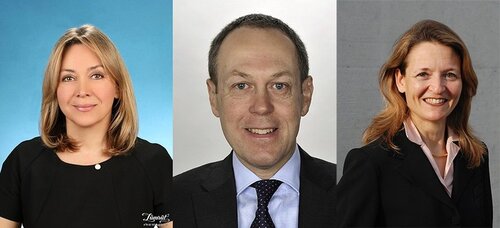![]()
1 March 2017
Preventing and reducing risk of peri-implantitis – key topics at Perio Master Clinic 2017
Categories:Clinical Practice, Events

How to prevent peri-implant disease and techniques that may reduce the risk that patients with implants will suffer from it will be addressed in detail at the EFP’s Perio Master Clinic 2017 – Peri-implantitis: from aetiology to treatment, which opens on Friday, March 3.
The first group of presentations at the event, held at the Mediterranean Conference Centre in the Maltese capital of Valletta, addresses the prevention of peri-implant disease.
Moderated by Bahar Eren Kuru (Yeditepe University, Istanbul, Turkey), this session will feature a presentation from Nicola Zitzman (University of Basel, Switzerland) on combining aesthetics and good cleansability, exploring how to design the “optimal superstructure,” followed by one from Giovanni Salvi (University of Bern, Switzerland) on non-surgical therapy and the question of whether antimicrobial and laser therapy represent the future.
Outlining the session and explaining the reasons why the prevention of peri-implantitis is so important, Prof Kuru says that despite all the advances within implantology, there remain several “controversial topics and issues” that are still subject to debate and that failure leading to the need to remove implants can occur.
Peri-implantitis, the main cause of such failure, has “become a public-health issue due to the huge increase in prevalence and the lack of a clearly agreed-upon standard management,” comments Prof Kuru. “When there are no established and predictable treatment concepts, primary prevention is of key importance.”
In addition, given the very high number of people treated with implants, the prevention of disease around implants “is the cornerstone of oral healthcare.” The prevention and management of peri-implant mucositis – considered to be the precursor of peri-implantitis – is a key measure for preventing the onset of peri-implantitis.
There are other risk factors and many different approaches to preventing and treating peri-implantitis, but this session will focus on two key areas:
- Risk factors for peri-implant disease related to prosthetic aspects and the key preventive measures that can be made regarding the superstructure to maximise the longevity of dental implants and to minimise the risks for peri-implant disease.
- The effects of two professionally administered measures – antimicrobial and laser therapy – to manage peri-implant mucositis.
Risk reduction
Also on the morning of March 3 is the session ‘Can we reduce the risk of peri-implant diseases by improving soft tissues adjacent to implants?’
Moderated by Anton Sculean (University of Bern, Switzerland and an elected member of the EFP executive committee), the session will feature presentations from Sofia Aroca (University of Bern, Switzerland) on how to increase the zone of keratinised tissue at implants, and from Otto Zuhr (private practice, Munich) on how to increase soft-tissue thickness at implants.
Noting the current popularity of implants, Dr Zuhr says that “the more frequent the request for implants from a patient’s side becomes, the more challenging and difficult cases occur in daily business.”
He explains that achieving healing without scar formation is the main goal of any surgical treatment in the oral cavity and that it is highly desirable to maintain “a harmonic natural contour of the gingiva – especially in the aesthetic zone.”
After placing implants, corrections of the adjacent soft tissues are often inevitable to compensate for former volumetric losses as well as offering the patient good accessibility for oral hygiene. In this context, notes Dr Zuhr, “a precise planning of the initial incision, the preparation of surgical flaps, and the final suturing technique are essential for a successful treatment outcome and long-term prevention against peri-implant diseases.”
He notes that the judgement of treatment results depends more and more on the patient’s opinion at a time of increasing measurement of patient-related outcomes. As a result, as well as function and aesthetics, it is important to measure accruing morbidity when defining the best treatment solution with patients.
To do this, it is essential to understand the biological interactions around implants and Dr Zuhr’s presentation will offer an overview of the biological factors that influence the long-term stability of peri-implant tissue and current surgical techniques for implant-related soft-tissue management.
He will also assess the opportunities and risks of modern treatment approaches and explain the whole process, step by step, from surgical procedures to the design of the final restoration, in order to give practical support to dentists in the everyday clinical work.
These presentations are part of a comprehensive scientific programme at Perio Master Clinic 2017, put together by scientific chair Stefan Renvert, aimed at providing participants with the latest knowledge about peri-implantitis and helping clinicians improve their skills in clinical practice to the highest level.
See also: How to tackle soft-tissue recession and resective therapy – key topics at Perio Master Clinic 2017.
Perio Master Clinic 2017 will explore techniques for regenerating peri-implantitis defects.




